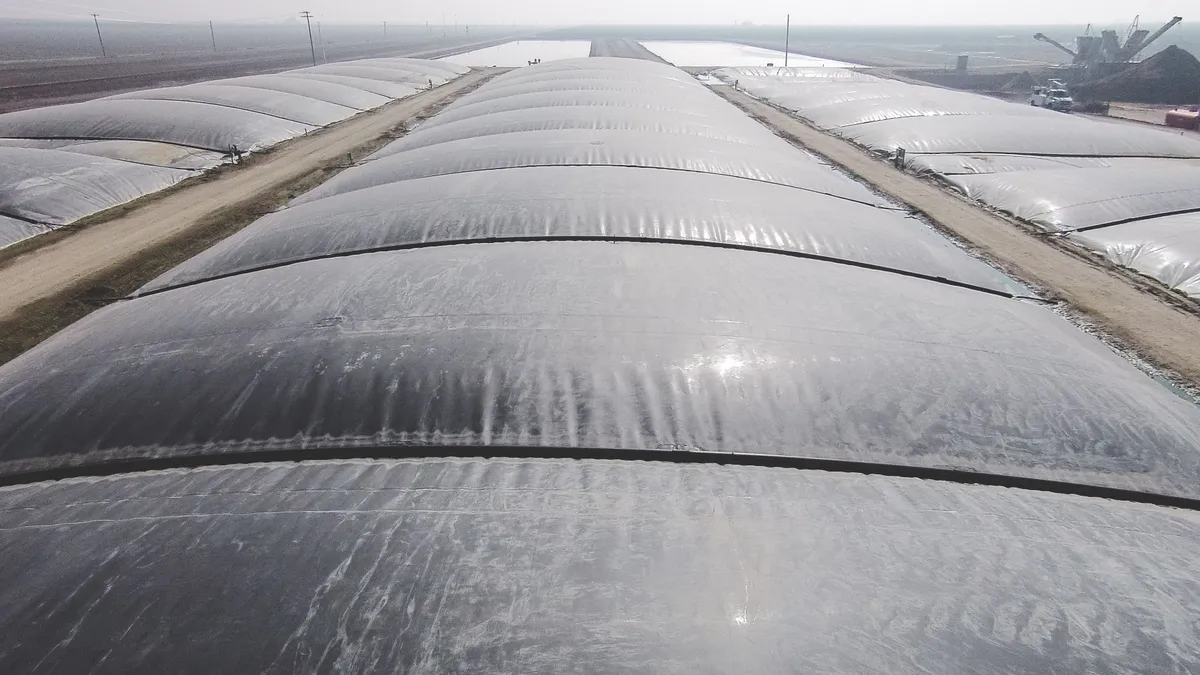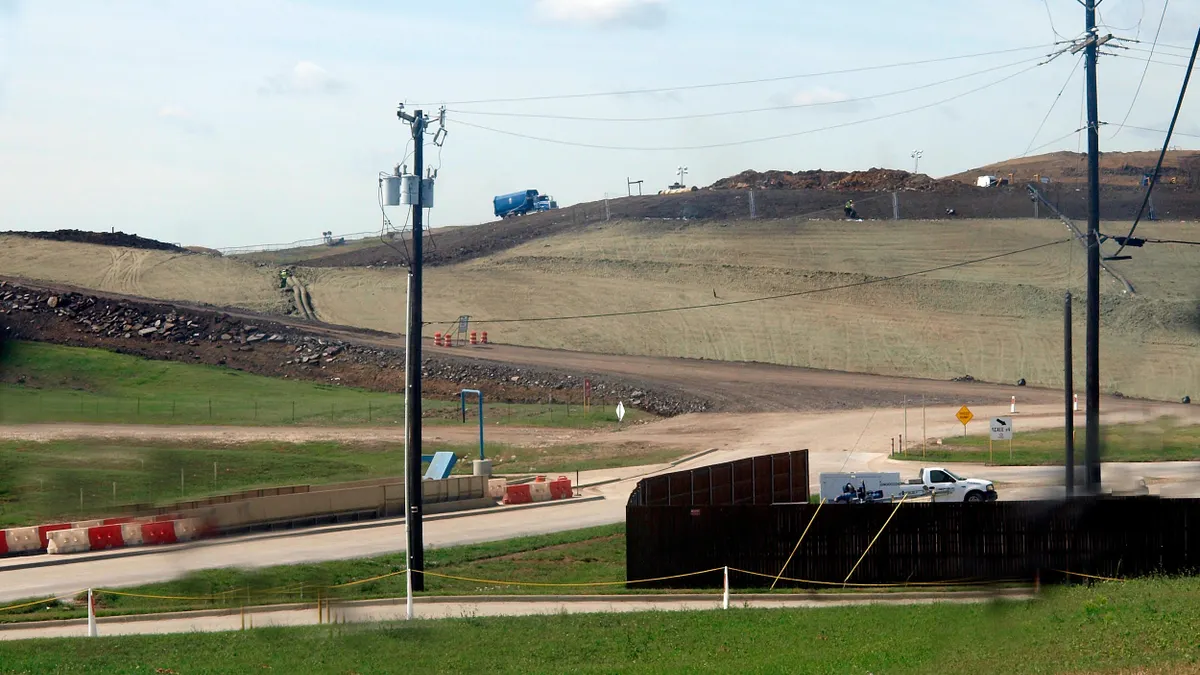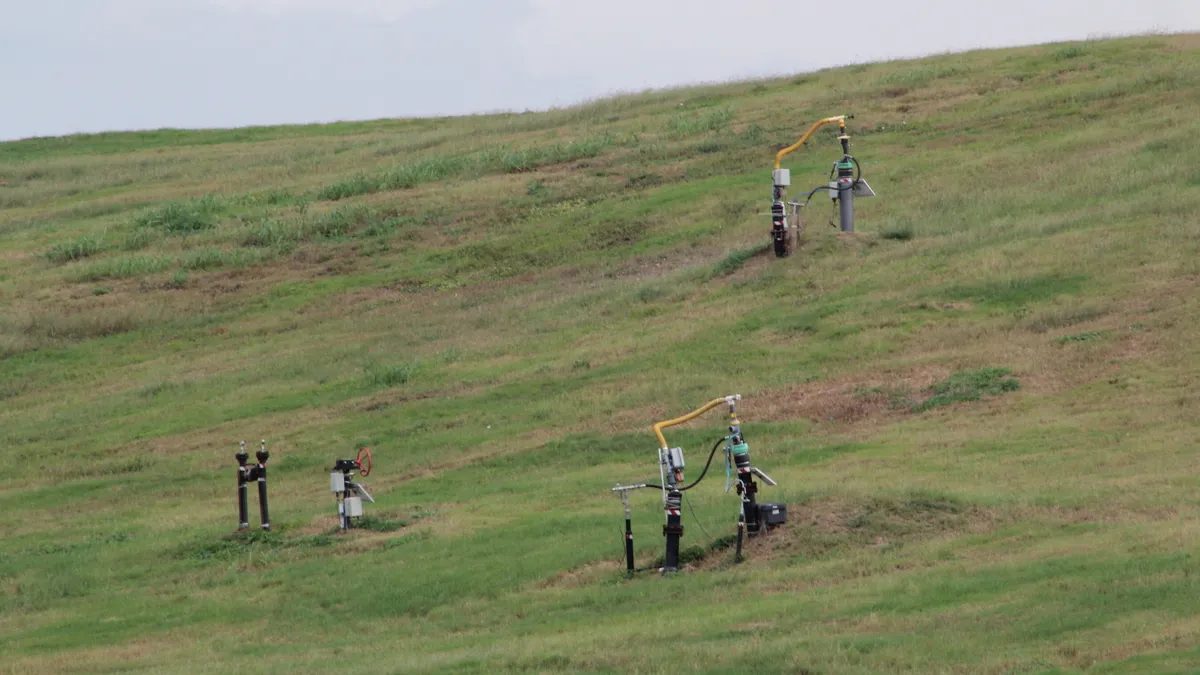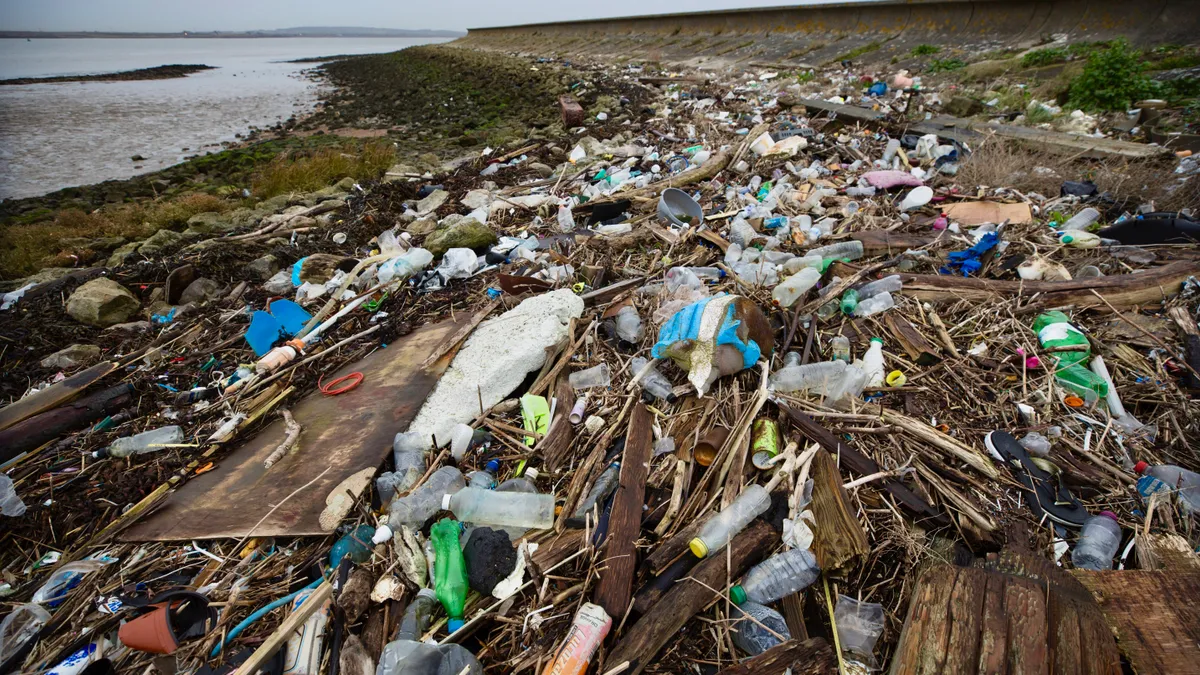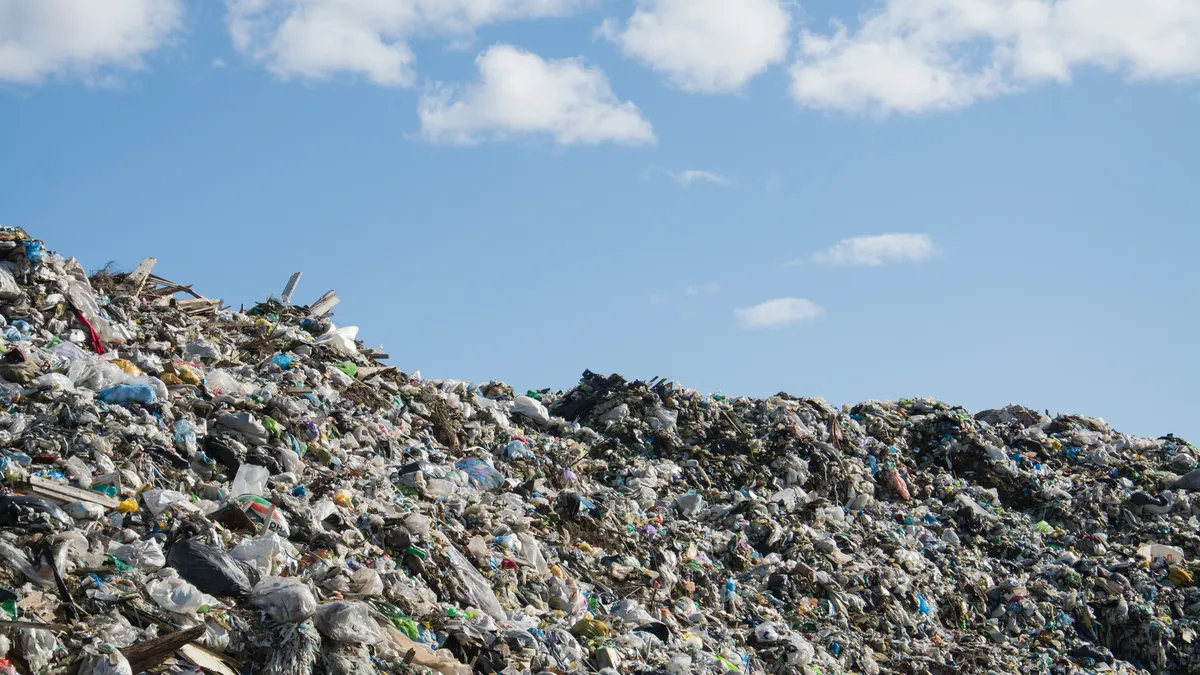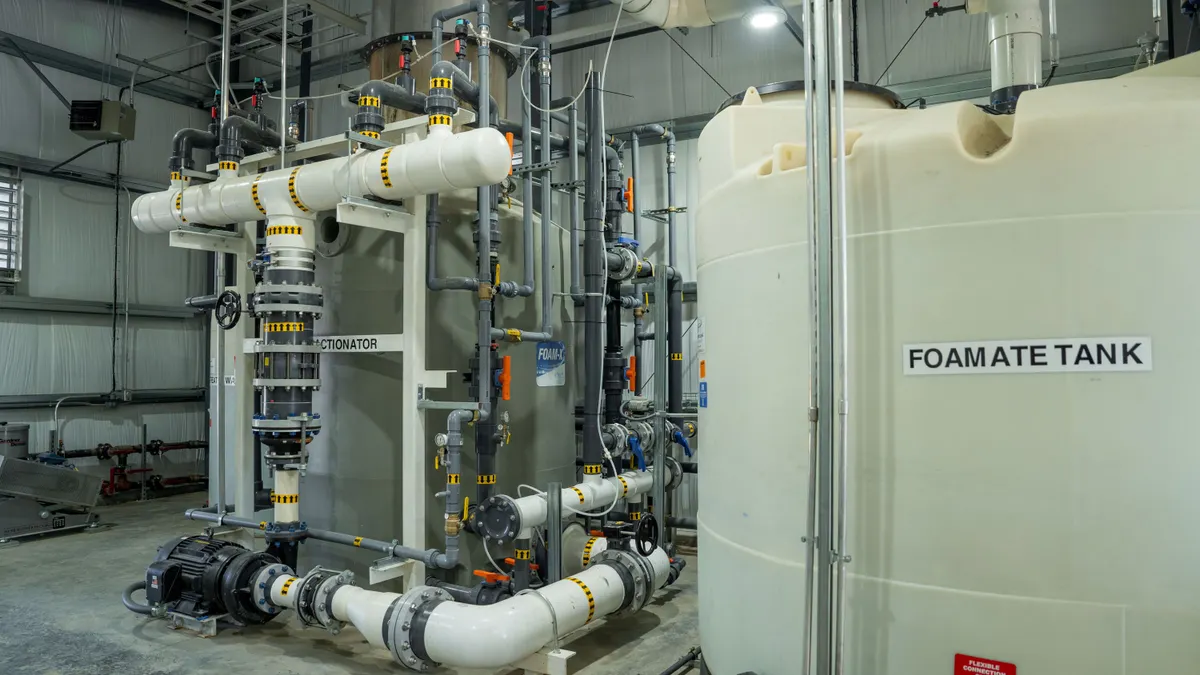The U.S. EPA’s Waste Reduction Model, a tool long used to guide policymakers on the emissions impact of materials management practices, is drawing new scrutiny just as state and local governments use it to vie for a major round of EPA grant funding. The agency closed the comment period for an update to WARM on Friday after extending the window for submissions from Feb. 9 to March 15.
The model, first published in 1998, has developed a reputation as an approachable method for government officials to weigh the relative emissions impact of landfilling, incineration, recycling, source reduction and other practices for their waste streams. But industry stakeholders are questioning WARM’s assumptions amid a rare peer review and EPA’s promotion of the model as a way for governments to assess needs for the $4.6 billion Climate Pollution Reduction Grants program.
“There are billions of dollars right now that are being invested into climate action solutions and projects through the [Inflation Reduction Act] and through the infrastructure bill,” said Julia Spector, a research and policy associate with the Institute for Local Self-Reliance. “[The Waste Reduction Model] is such a large piece of these applications. It's obviously of high importance and folks really wanted to be able to do a good job with it, but unfortunately the tool isn't able to provide that.”
WARM has undergone numerous revisions leading up to the version 16. This latest update shifted the model’s underlying assumptions for several materials, including food waste, mixed electronics and wood product C&D materials, and updated the economic impact factors associated with waste management processes.
Users of the freely available model, housed in an Excel spreadsheet, can customize their material inputs to accurately reflect local conditions and practices. In addition to providing an assessment of emissions impacts, it also provides an assessment of the economic impact of materials management decisions.
“It's very unique in terms of what it offers the general public,” said Malak Anshassi, one of the model’s peer reviewers and assistant professor of life cycle assessment and sustainable materials management at Florida Polytechnic University.
While the model isn’t as robust as some of the more advanced life cycle assessments conducted by experts today, “you can use it as like a baseline to check a few things to inform your decisions — not as this big, heavy, scientific, clunky machine that you need a few experts and consultants to run through and utilize for you so that you can make decisions,” Anshassi said.
But the model's limitations are increasingly drawing the ire of zero waste and anti-incineration groups. They say the EPA's assumptions around emissions from putrescible material are incorrect, and the underlying data on alternative energy sources is out of date. What’s more, groups like ILSR say the model is injecting outdated assumptions into policymaking at a time when the nation is making historic levels of investment into the materials management infrastructure of the future.
The EPA is evaluating the comments and peer review for WARM version 16 now “to determine potential next steps to improve the usability, integrity, and functionality” of the model, Angela Hackel, acting director of the EPA’s Office of Media Relations, said in an email. The agency did not directly respond to criticism of the model.
WARM’s assumptions
Spector works with ILSR’s Composting for Community Initiative, and she has spent the last few months assisting governments as they prepare climate action plans for the first phase of the Climate Pollution Reduction Grants program. She points out WARM is one of the main models EPA recommends for governments looking to quantify their emissions.
“There have been lots of folks reaching out for guidance on how to calculate this, and there really isn't a lot of other options or other models that have been pushed out to calculate these estimates,” Spector said.
The model is also used by third-party consultants to provide a topline look at potential policy goals. Kent County, Michigan, for instance, has a mass burn combustion facility, but it has also been interested in constructing an anaerobic digestion facility and employing other means to divert materials from a quickly filling landfill. Bradley Kelley, a senior project engineer with Gershman, Brickner & Bratton, said he used WARM to provide the county with emissions reduction estimates as part of an overall report.
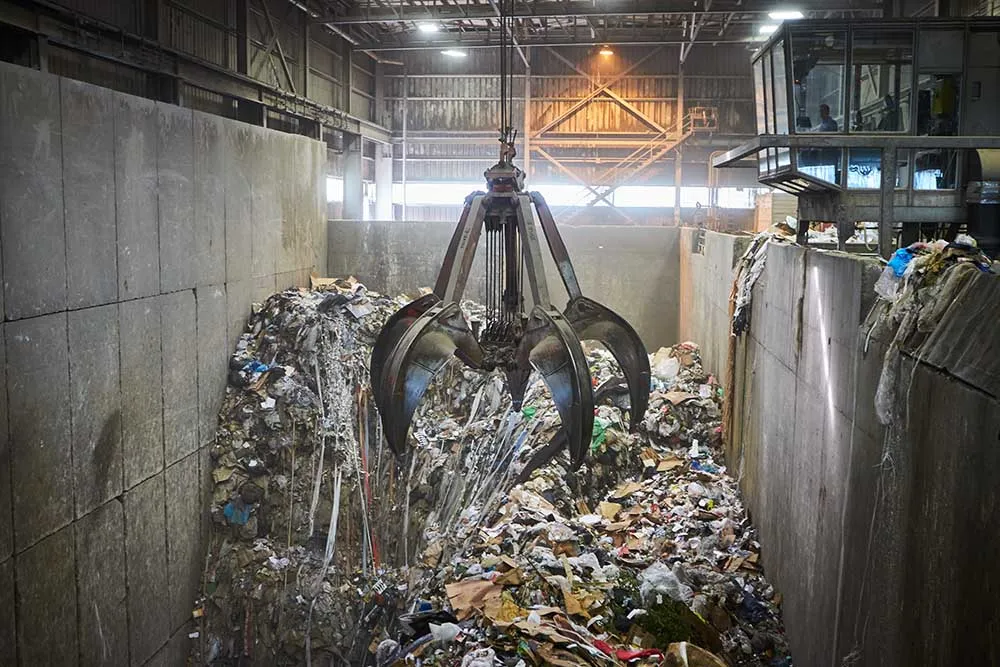
"It has its limitations, certainly, but for an overview for groups looking at, 'Hey, if we did this change, what kind of greenhouse gas emissions could we remove from the environment?' It's pretty good for that," Kelley said.
WARM is a living model similar to life cycle assessments that attempt to determine when one disposal option is better for the climate than another. But EPA cautions that the model is a comparative tool that “should not be used for final site-specific materials management decisions,” and — unlike many life cycle assessments published over the past two decades — WARM only recently received a peer review.
In 2022, the EPA commissioned contractor ERG to conduct an external peer review of the model. Academics examined documentation about the model’s underlying assumptions regarding its 61 material inputs and answered a list of questions from the EPA about WARM.
Among other questions, the EPA asked reviewers whether the model’s assumptions around biogenic carbon were correct. Biogenic carbon refers to carbon stored in natural materials from plants or animals. WARM assumes emissions from decomposing biogenic material are zero, in part because the United Nations’ Intergovernmental Panel on Climate Change does not count those emissions as part of the waste sector’s overall emissions.
Those opposed to incineration say counting emissions from biogenic sources is important, because leaving them out of WARM significantly reduces the amount of emissions accorded to incineration, whereas emissions from biogenic material are released into the atmosphere immediately. Landfilling, by contrast, is still accorded emissions impact from the methane produced by biogenic carbon decomposing in a landfill’s anaerobic environment.
The EPA’s justification is that only anthropogenic emissions — those caused by human activity rather than waste decomposing naturally — should be counted, as methane generation would not occur from naturally decomposing organic waste. In its summary of responses, the agency said three reviewers thought WARM was “generally consistent with common modeling best practices on the issue,” but it noted some pushback on the 100-year timescale at which EPA counts emissions.
But that decision ignores the human-created conditions of an incinerator, where ash is often landfilled and carbon is not immediately returned to the soil like in natural decomposition, said Mike Ewall, founder and director of anti-incineration group Energy Justice Network.
“We’re not talking about leaves falling from a tree in the woods and they naturally break down. That’s biogenic. If you’ve put things in trash cans and crushed them with trash trucks and brought them to a human-made waste disposal facility, that’s anthropogenic,” Ewall said.
The way the model treats biogenic carbon also flies in the face of guidance from the IPCC, according to Mary Booth, director of the climate and bioenergy group Partnership for Policy Integrity. She notes that despite the EPA’s assertion that its 100-year timescale for emissions estimates makes biogenic carbon emissions “inconsequential,” the IPCC actually does still consider emissions from that decomposing material elsewhere in its model, whereas WARM does not.
“For national level accounting, where all sectors are reported, biogenic carbon emissions can be counted as zero in the waste sector because the carbon loss was already counted in the land sector,” Booth wrote. “However, for a single-sector model like WARM that purports to make recommendations on the climate impact of different waste disposal options, it is obviously important to determine and report the CO2 impact.”
Booth also objected to WARM’s indifference to the timing of when emissions from materials are released into the environment. The model views emissions released over the course of decades from a landfill as an equivalent impact to those released immediately via incineration. But that judgment fails to take into consideration the more immediate climate targets that governments at all levels have set, she said.
“I think their rationale is, well, it’s going to decompose and emit CO2 anyway, so we’re just not going to count the CO2 that’s emitted when you burn it. That’s just bonkers,” Booth said in an interview.
In written comments for ILSR, Spector also urged the EPA to reconsider its exclusion of biogenic carbon emissions from the tabulation. The group places an emphasis on composting and other small-scale, closed-loop materials management systems, and it has long argued that WARM could better reflect those practices. But it said the model was “biased” in its treatment of incineration and argued WARM isn’t giving its users a true understanding of the impact of their decisions.
“The time frame of emissions impacts is exceedingly crucial, and the magnitude of GHG reductions in the short-term (by 2030) is increasingly of focus in climate mitigation strategies,” ILSR wrote, citing comments from the Global Alliance for Incinerator Alternatives. “Delaying the release of [biogenic carbon emissions] for even short periods can help avoid overloading short-term atmospheric loading, which could trigger cascading tipping points in the Earth System.”
Anshassi said scientists developing a life cycle assessment tool should incorporate factors like biogenic carbon emissions or the timescale by which they measure carbon according to their own goals for the tool. She said WARM could be considered fair as long as it chooses to count biogenic carbon either across all disposal methods or none, as it does.
But a broad array of critics argues that for the purposes of a tool like WARM, a shorter timescale is needed.
Landfilling vs. Incineration
Covanta, which operates 35 WTE facilities around the country, submitted comments critical of WARM's methodology for landfill emissions. The model's assumptions of landfill gas collection efficiency rely on research that is more than a decade old, Michael Van Brunt, vice president of environment and sustainability at Covanta, pointed out. Since then, researchers have found increasing evidence of methane plumes or other collection issues that could imply much more inefficient gas collection rates, something environmental advocates have also urged the EPA to crack down on.
Covanta supports “a consistent approach for all sources and using the best data” when it comes to biogenic carbon, said Nicolle Robles, the company’s director of communications, in emailed comments. But the company believes the EPA should allow WARM users to toggle between the global warming potential of emissions on a 20-year and 100-year timescale to better guide climate decision-making and capture the impact of landfill methane, Van Brunt wrote in comments.
"The benefits of landfill diversion through source reduction, recycling, composting and energy recovery are consistently underpredicted,” Van Brunt wrote. “This underprediction can lead decision makers to undervalue the importance of investments in diversion infrastructure and programs.”
Ewall agrees that the EPA needs to move to a shorter timescale so that WARM’s users can better understand the immediate climate impact of their decisions. But he also argues those changes should make a negligible difference in WARM when comparing landfilling to incineration.
He points to a study conducted by Sound Resources Management Group using its own life cycle assessment tool for Delaware County, Pennsylvania. The county currently sends most of its waste to the Covanta Delaware Valley WTE facility and sends a smaller proportion to WM’s Fairless Landfill and the Delaware County Solid Waste Authority-owned Rolling Hills landfill.
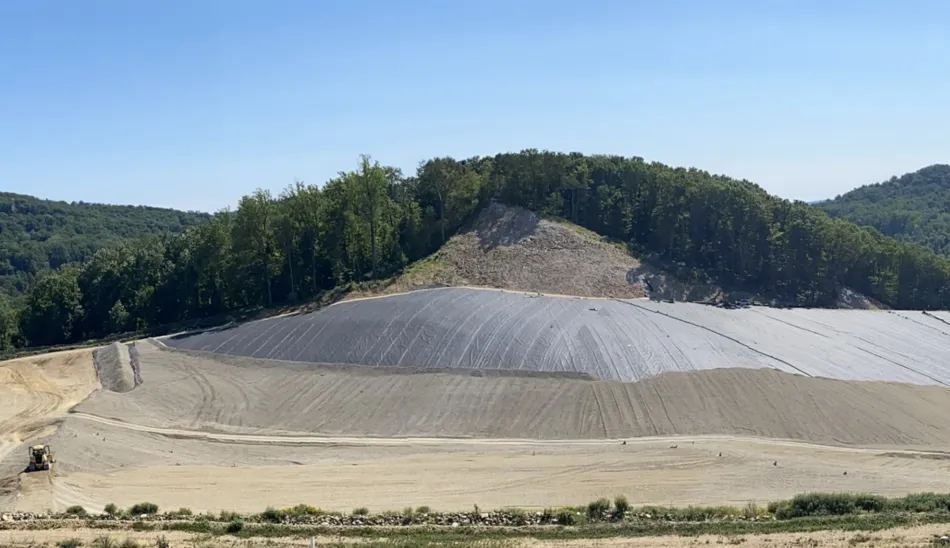
Sound Resources used its MEBCalc tool, which works similarly to WARM but takes a broader range of environmental and economic factors into account, to come up with a final cost analysis. The consulting group found that the environmental and economic cost per ton of municipal solid waste sent to the incinerator was 78% higher than the environmental cost per ton of MSW sent to the Rolling Hills Landfill. Notably, the assessment found that even if the Rolling Hills landfill captured just 30% of its gas, the cost per ton of disposal at the landfill would still be lower.
Ewall said those findings present evidence that even if WARM were adjusted to better capture leaky landfill emissions, it should still be more critical of the true costs of incineration.
“No landfill's gonna tell you they're at 30% capture rate, and I doubt any of them are that bad with rare exceptions,” Ewall said. “It would take something as miserably bad as 30% for things to be equal with how bad incinerators are.”
Robles said Sound Resources’ findings “aren’t defensible” in an emailed statement. She also said their MEBCalc tool should not be evaluated “on the same plane as tools developed by the EPA or academic institutions.” Covanta declined to make Van Brunt available for an interview about WARM.
Ewall and other advocates also say the model’s incinerator emissions have been artificially suppressed because WARM compares incineration’s emissions to an alternative that they feel is out of touch with real world conditions.
The model largely assumes energy derived from incinerators is taking the place of energy derived from fossil fuel sources like a coal or natural gas plant, advocates point out. They say this is increasingly untrue as efforts to decarbonize the grid ramp up. Several states include waste-to-energy in their renewable portfolio standards, which essentially means WTE plants could compete for subsidies with wind or solar projects, energy sources with fewer emissions.
The exclusion of renewable portfolio standards is a “critical error” that may result in a miscount in the amount of avoided emissions, climate-focused policy group Applied Economics Clinic said in written comments. They describe WARM’s assumptions about how the electric grid functions today as overly simplistic and note it doesn’t take into account the sea change currently underway with renewables.
WARM’s enduring ‘usefulness’
The EPA has said it will continue to update the model based on feedback it receives. The agency anticipates a version 17 of the model could come out in “late 2025,” but that’s dependent on how long it takes to review and incorporate feedback, according to Hackel, the agency spokesperson.
Meanwhile, the tool will continue to be used by members of the waste industry. Kristyn Oldendorf, director of public policy at the Solid Waste Association of North America, said an “active community of professionals” uses the tool and said “it does help with decision-making and modeling.”
In 2021, Anshassi published a review of life cycle assessments comparing landfilling and incineration to identify why a model might find one disposal method better from a climate perspective than the other. Her review found that most of the 14 studies reviewed favored incineration.
By breaking out the different assumptions each study had made, she determined that a high landfill gas collection and recovery efficiency made the biggest difference in studies that favored landfilling. A WTE facility receiving carbon offsets for its energy recovery or a WTE facility sending its energy into a grid with a lot of fossil-derived energy made the biggest difference in studies that favored incineration.
Looking at WARM, Anshassi said it’s difficult to identify a bias one way or the other, because users can input some of their own variables like the composition of waste in need of disposal. Those variables influence users’ results — a high amount of plastics in the waste stream, for instance, helped sway some of the assessments she reviewed toward landfilling as a more climate-friendly disposal method. In part because of that variability, she still believes the model fulfills its purpose as an approachable tool for policymakers.
“Of course, you could break apart everything in WARM and reevaluate a few things in it, and then you would probably require consultants to do that for you, or somebody like me,” Anshassi said. “But I just think it's very powerful in that it provides that usefulness for decision makers that other tools really require you to have this heavy lifting.”
Editor’s note: This story has been updated with comments from the EPA.








